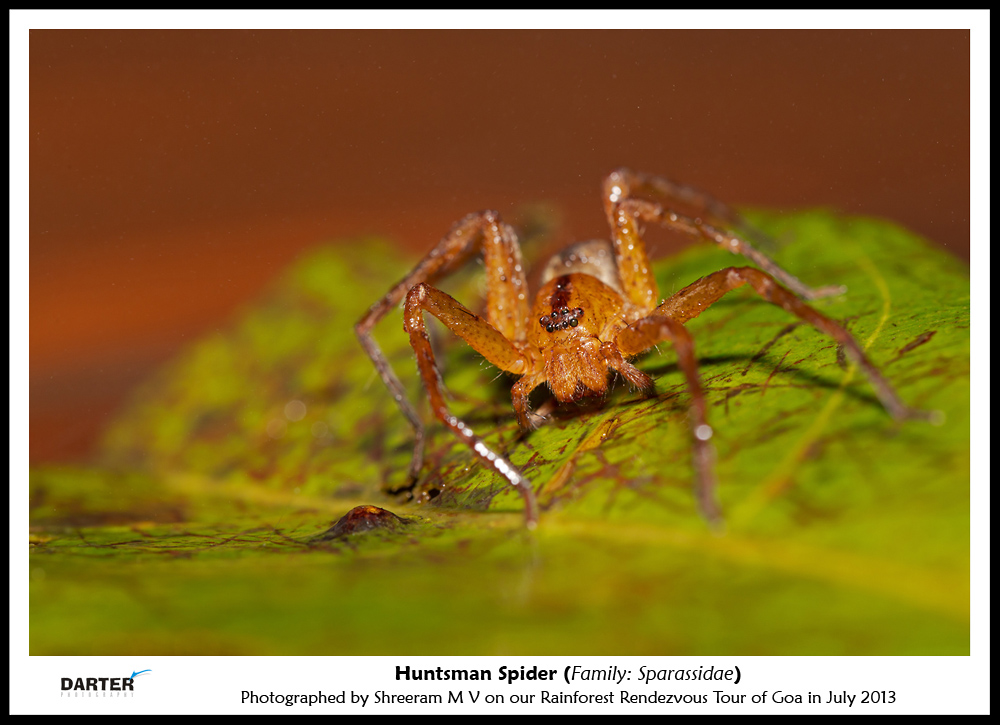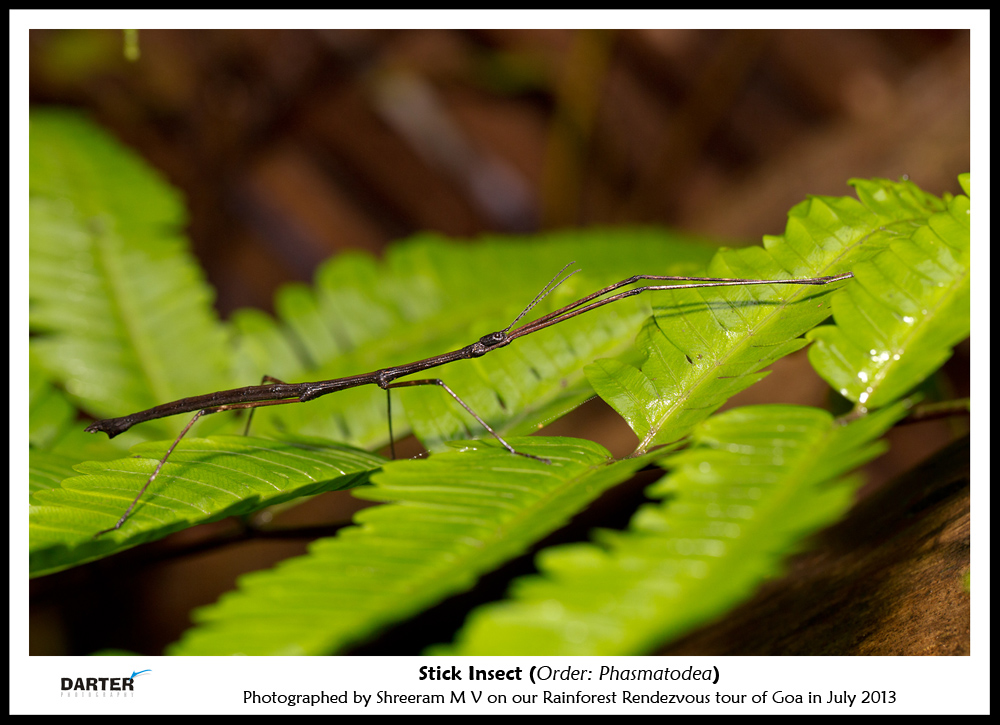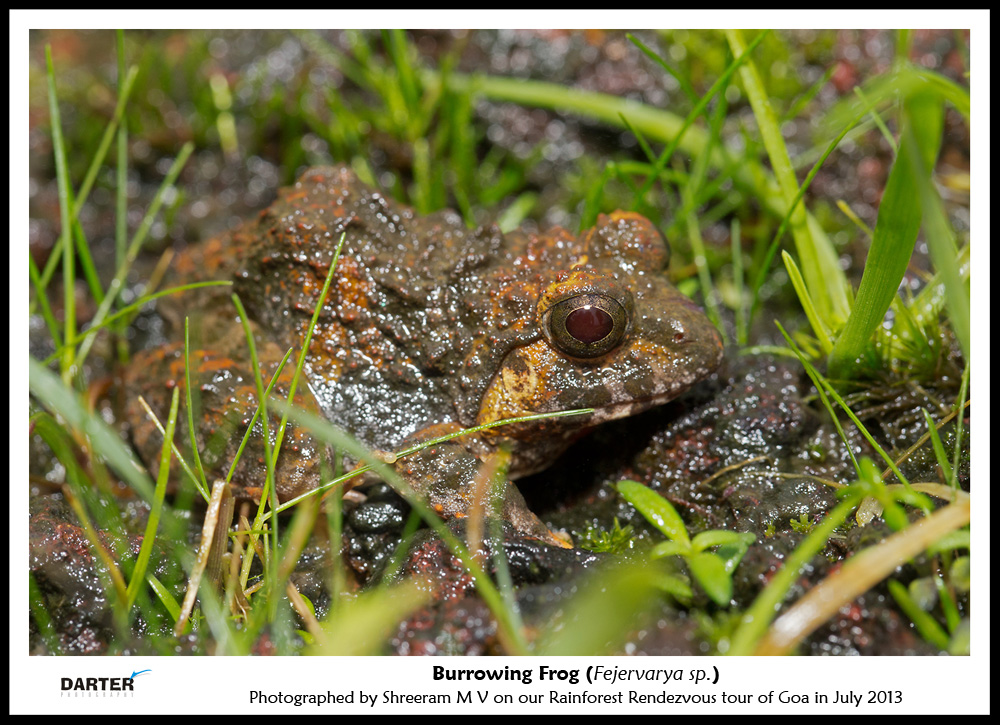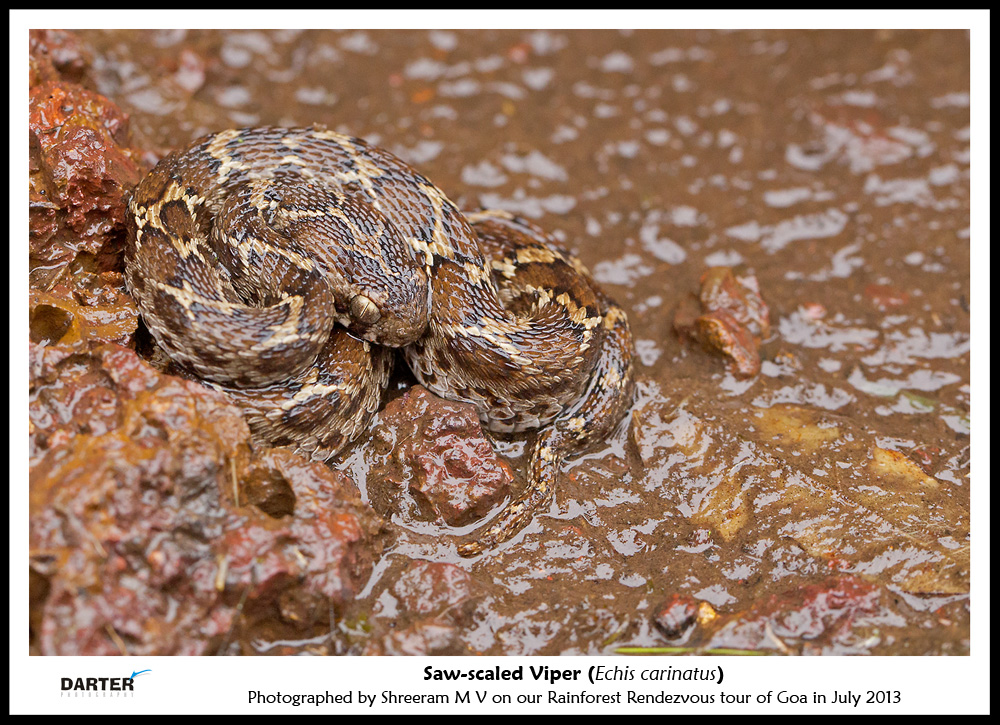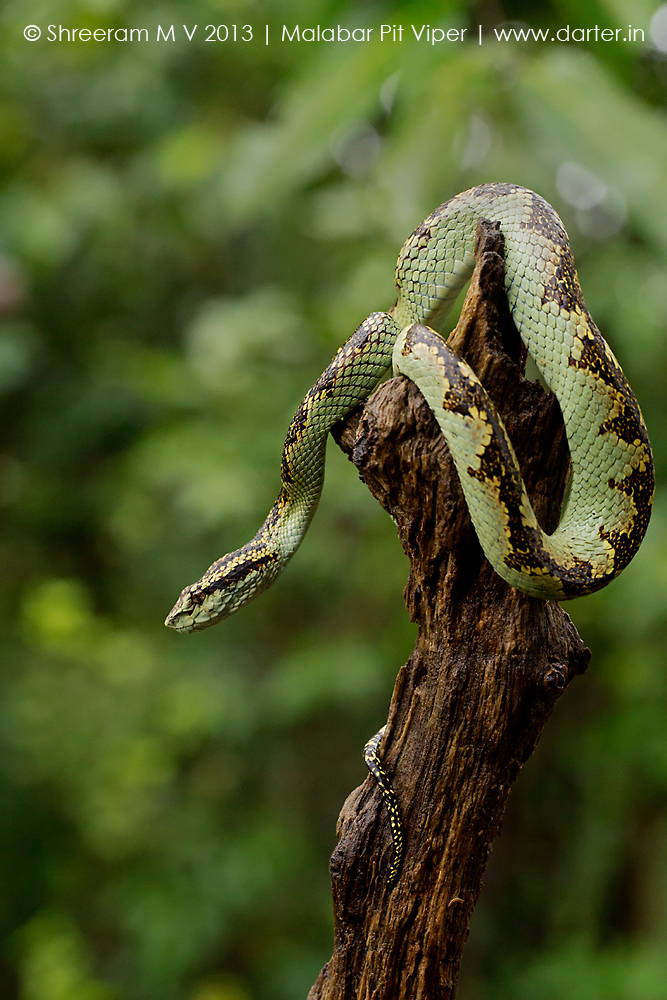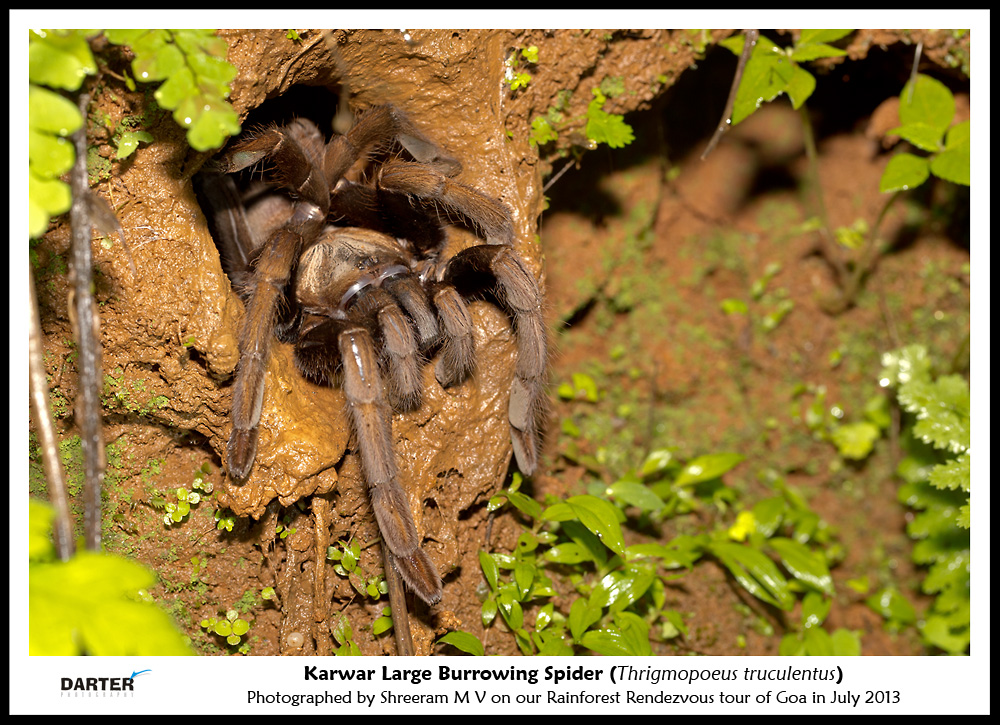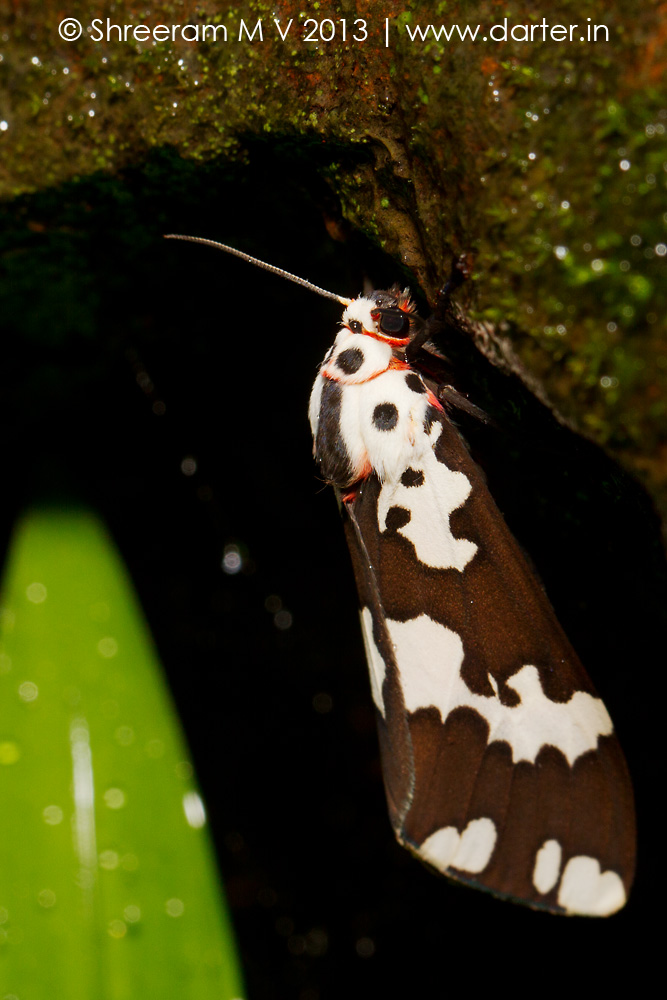Excitement. Anticipation. A little bit of nervousness. Doing a tour for the first time has been a mix of all this and more for us. Our new destination for the weekend – Goa (as part of our Rainforest Rendezvous brand). We were headed to Swapnagandha Resort in the Chorla Ghat area. Over the course of the weekend, we would be shuttling between 3 states – Goa, Karnataka and Maharashtra – as we went along the trails around the resort.
As we drove into Swapnagandha on Friday afternoon, we were greeted by lots of rain and clouds. The weatherman had predicted that the heavy rainfall over the past one week would start clearing over the weekend. As we checked into our rooms, we were greeted by this amazing sight from our balconies.
The Vazra-Sakla waterfalls were in their full glory during the peak of the monsoon. These falls plunge 143 metres (469 feet) and are quite a spectacle with all the forests surrounding them. The cliffs around the waterfalls are nesting grounds for Long-billed Vultures (IUCN Status: Critically Endangered).
After an introduction session, we headed out on a short walk around the Swapnagandha campus. Our first encounter was this beautiful Huntsman spider (Family: Sparassidae) in the dining area.
We also came across this Stick Insect, the first of many seen over the 3 days, on a fern.
Snails were seen virtually everywhere, in various colours and sizes. Here’s one that had bent itself to feed on something.
After lunch, we headed out to a high-altitude plateau eco-system. This place is around 300 feet higher than the resort and is an open rocky plateau. Our first stop was the Mhadei Research Station where Nirmal Kulkarni (herpetologist and Director at Wildernest/Swapnagandha) gave us an overview about the fauna that is seen on the plateau. He also explained that many species on the plateau may not have been documented yet. We set out to the plateau and came across this beautiful Centipede.
As we climbed up to the plateau, the winds grew stronger and there were frequent spells of rain. As we started exploring the area, we came across many Swamp Eels under rocks. They would immediately disappear underground or under rocks. Here’s one burrowing its way through.
We also came across this Reddish Burrowing Frog (Fejervarya rufescens).
Under one of the rocks, we saw the first snake of the tour. It turned out to be a Saw-Scaled Viper (Echis carinatus). The tiny snake was almost completely camouflaged and was curled up in “strike” position. One of the Big Four species of snakes (responsible for a majority of snakebites and deaths), this one was a charmer with a beautiful golden eye.
Nirmal explained that the Saw-Scaled Vipers on the plateau behaved differently from those found elsewhere because they lived in very wet areas (as against dry areas for the common ones). Their scale counts (used to differentiate species of snakes) also differed, thereby suggesting that they could be a different sub-species/species.
That evening after sunset, we set off on a night trail through the nearby Wildernest Resort. At one point, we turned off the torch lights that we were carrying and were shrouded in darkness. Within a minute, we noticed that the trees around us were glowing! There was bioluminiscent fungi growing all over them. We decided to return the following night to photograph this wonderful phenomenon.
Near a water pond, we started hearing a number of frogs call. Turned out that they were male Malabar Gliding Frogs (Rhacophorus malabaricus) that were calling out to attract females. Due to the high density of the frogs, a Malabar Pit Viper (Trimeresurus malabaricus) had also positioned itself in one of the trees. The heavy rains, probably, forced it to stay under leaves; it was in the same position for all the 3 days of our tour.
After a sumptuous dinner, tired yet elated, we all retired to our rooms for the day.
Next morning started off with a walk around Swapnagandha. It was a nice misty morning with many colourful insects all around.
After breakfast, we headed out on a trail that would take us to a higher altitude above the resort. As we reached the top of the hill, the view was breathtaking!
After lunch, we came across this beautiful Malabar Pit Viper (Trimeresurus malabaricus). Malabar Pit Vipers are endemic to the Western Ghats. They have been observed in various colour morphs, including green (in the photographs), brown, yellow, orange and mottled green. These venomous snakes wait motionless in a coiled up position waiting for prey to pass. When potential prey passes by, these nocturnal hunters detect it through heat-sensing pits in front of the eyes and strike, injecting venom into the prey.
We then came across a Beddome’s Keelback making its way around the dining area. Beddome’s Keelback or Nilgiri Keelback (Amphiesma beddomei) is a non-venomous species of snake that is endemic to the Western Ghats. It’s colouration blends the snake against the ground and leaf litter.
The one snake that was eluding us was the Green Vine Snake (Ahaetulla nasuta). We’d seen a small one roosting during our night walk on Day 1. Our search on Day 2 was also futile. As dusk set in, so did the rain. The rain also gave us a good opportunity to review our photographs and discuss about Snake Bite protocol with Nirmal. Nirmal explained how the Snake Bite Protocol varies from place to place based on access to hospitals. He stressed how it is important for every housing society to have a defined process to get the victim to a hospital as soon as possible, in case of a snake bite emergency. The session was very educative, as we discussed about taxonomy, venom and many other aspects. Before we knew, it had been more than a couple of hours since we’d started. Darkness had set in and the rain had slowed down to a drizzle.
We headed out to Wildernest again for the night walk. We saw a couple of Green Vine Snakes roosting. Not wanting to disturb them, we moved on. We again passed by the area of bioluminiscent fungi. This time, despite the rain, we were determined to photograph the spectacle.
With heavy rains, it took 4 of us doing different tasks to get this photograph (exposed for more than 8 minutes at ISO 1600). If you’ve not already guessed it, the bright green “light” in the foreground is the root of a tree, with a lot of vegetation and a creeper in the background. It took us a lot of time to locate this place again during the day! More on bioluminiscent fungi in an upcoming Rainforest Biodiversity post…
After dinner, we headed out to a place where Karwar Large Burrowing Spiders were found. These are tarantulas that live inside holes made into mud walls a few feet above the ground.
As Day 3 dawned, we set off on our last trail for the tour. We came across this interesting moth resting under a rock.
These Harvestmen were all over a tree. Harvestmen are Arachnids that belong to the order Opiliones. They are not spiders.
And then, we got word about a Green Vine Snake being sighted some distance away. As we started photographing the snake, another one was seen a few hundred metres away. We reached the second snake and within a few minutes, we realized that we were surrounded by 3 Vine Snakes within a 10 metre radius!
As we were heading back to our rooms to pack up, we came across another Malabar Pit Viper (mottled green morph). It seemed to be looking for a place to rest for the day; so we let it be. What a way to end the tour!
3 days of amazing observations, learning and photography opportunities! We can hardly wait to head back to Goa!


